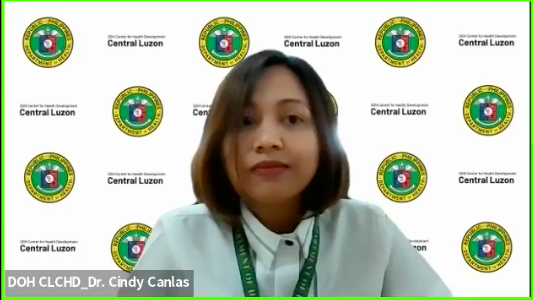TARLAC CITY (PIA) — Department of Health (DOH) Central Luzon Center for Health Development (CLCHD) promotes the early detection and treatment of Type 1 Diabetes Mellitus (T1DM), also known as Juvenile Diabetes, to prevent serious complications.
T1DM, usually diagnosed in children and young people, is a condition in which the immune system attacks the islets of langerhans or beta cells of the pancreas leading to the destruction of insulin-making cells.
In a virtual presser, DOH CLCHD Non-communicable Diseases Cluster Medical Officer IV Cindy Canlas disclosed that the Diabetes Report 2000-2045 showed the increasing cases of T1DM in the Philippines.

“About 5-10 percent of patients with diabetes have T1DM. If untreated, this may lead to other risks such as glaucoma, cataract, diabetic neuropathy, cardiovascular disease, foot damage or brain stroke,” she warned.
Canlas encouraged the public, especially diabetic patients and their families, to avail the free consultations, check-ups, glucometer, glucose test trips, and access to insulin provided by the government through rural health units, municipal/city health offices, health centers and DOH hospitals to prevent further complications.
She also emphasized the importance of a healthy lifestyle, proper nutrition, and regular physical activity to avoid developing diabetes or to delay its complications.
“Type 1 Diabetes is treatable and its complications are preventable. Know the signs and seek consultation. Screening is also important as children have 3-4% chance to develop diabetes if the mother is diabetic, and 6-9% chance if the father has it,” she explained.
T1DM can be treated through insulin therapy, compliance to treatment, and regular follow-up, monitoring and screening.
Signs and symptoms of juvenile diabetes include polyuria or frequent urination, polydipsia or increased thirst, polyphagia or increased hunger, lack of weight gain in keeping with poor gain in height, fatigue, and blurred vision. (CLJD/TJBM-PIA 3)





